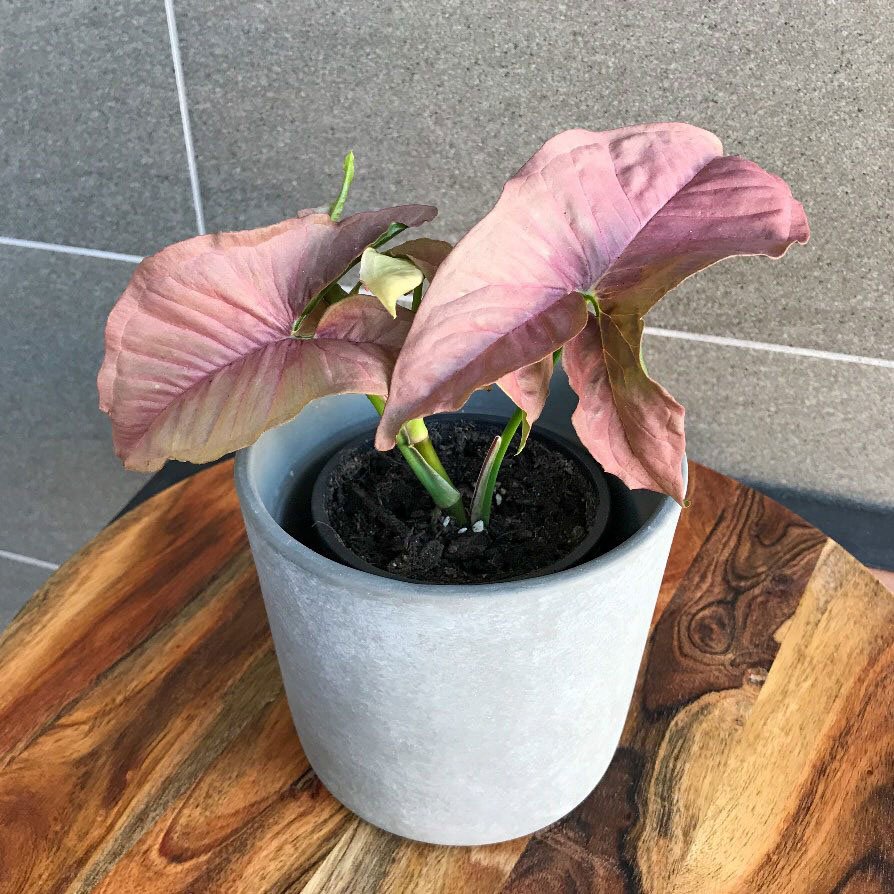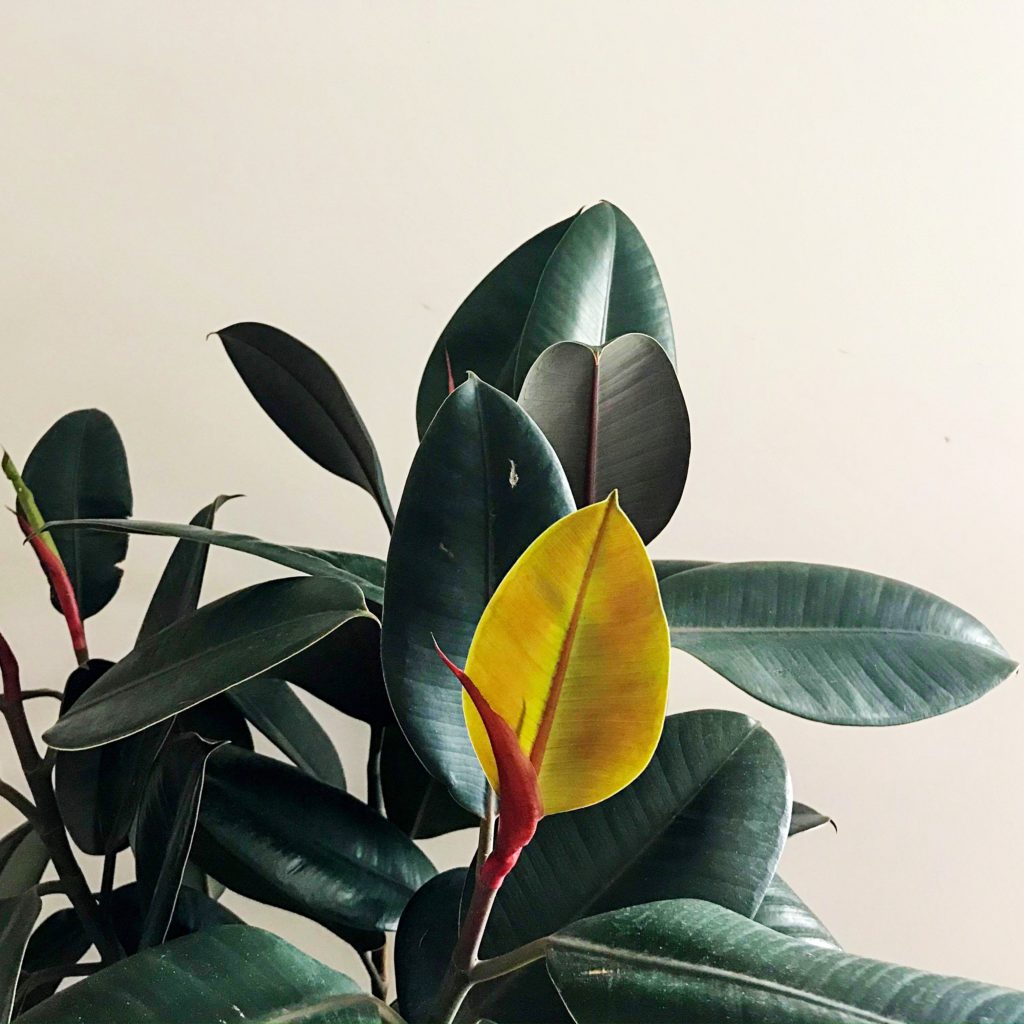Syngonium Podophyllum a.k.a Arrowhead Plant, Arrowhead Vine, Arrowhead Philodendron or Goosefoot

Syngonium Podophyllum Quick Overview
| Full Size | 1.8 m (6 ft) |
| Light | Medium-bright indirect |
| Temperature | 60-80˚F (15-26˚C) |
| Humidity | 40-50% |
| Cost | $ |
| Care Level | Easy |
| Toxicity | Toxic |
Arrowhead Plants (Syngonium Podophyllum) are known for their arrow shaped leaves and variety of colours. The Arrowhead Vine is an easy to care for houseplant that tolerates low light conditions and is super easy to propagate. When kept in ideal conditions, this plant will grow like a weed.
Arrowhead Plants are a vining plant from the Araceae family. The species is native to Southern Mexico, the West Indies, Central and South America. Arrowhead plants come in a variety of different colours and patterns ranging from different shades of greens to pink. Young Arrowhead Vines are more compact and bushy but as they mature they start to produce trailing/climbing stems with larger leaves. If you’re looking for more of a compact plant, simply trim off those trailing stems.
Syngonium Size
Syngonium plants are a versatile house plant that can be trained to either bush up by regular pruning or can be left to trail as a large vine. The typical full grown size of a these indoor plants when kept as a trained vine is around 1.8m/ 6ft in length.
If you are after a bushier plant, as the vines start to grow out cut them off with a pair of pruners. You can then propagate these cuttings if cut correctly below the node. They will root fairly quickly in either water or moist soil. Once established they can be planted back in with the original plant to create the desired bushy effect.
Light Requirements
Although Syngonium can tolerate low light, they will perform best when positioned in medium to bright indirect light. Keeping your Arrowhead in brighter light will assist in faster growth and to help maintain the vibrant colours. Signs that your Arrowhead vine is getting too much light is burnt or bleached leaves.
When positioned in a spot with low light, foliage can become dull and the leaves will start to grow further apart. This can be resolved by changing the position of your plant to somewhere that better suits its light requirements.
Temperature
Syngonium plants prefer warmer temperature conditions and will grow best when kept in an area which maintains a temperature of 60-80˚F (15-26˚C). If possible, avoid temperatures that drop below 50˚F (10˚C). When keeping your plant outside of this temperate bracket for prolonged periods of time you can expect it to develop health issues or seize growing.
Humidity
Arrowhead plants can tolerate the average household humidity (40-50%). However, since arrowhead plants are native to rainforests, providing a higher humidity that’s over 60% will assist in keeping your Syngonium happy and healthy. If your plant is housed in a spot with a humidity level consistently outside of this range, click here for tips on how to increase or decrease humidity levels.
Watering Requirements
Although Syngonium can be quite drought tolerant, providing water regularly is best. During the active growing season (Spring to Summer) Syngonium will require watering more frequently. You should allow your Arrowhead plant to dry out slightly between each watering.
When watering your Syngonium, be sure to water thoroughly allowing the water to drain completely. Aside from solely relying on the watering frequency to tell when your plant is thirsty, a tell tale sign that your plant needs water is the leaves drying out and turning brown. During the cooler months when growth slows, your plant will use less water to grow thus watering will be required less frequently.
Fertilizing requirements
In optimal conditions your Syngonium should be fertilized monthly during the growth period with a half strength fertilizer. This will assist in keeping your plant alive as well as promote healthy growth. During Fall and Winter when growth slows, fertilizing isn’t required.
Syngonium Soil Requirements
Syngonium will grow best when planted in a well draining, fertile soil. To achieve well draining soil the addition of soil additives such as perlite will assist in water flow. When looking for soil for your arrow head plant a standard indoor potting mix would be ideal in most cases.
Some indoor potting mixes contain slow release fertilisers but do not stress if you can not find one with these as regular fertilising methods can be used in lieu of this.
Diseases & Pests
The most common diseases and pests for Syngonium include spider mites, Mealybugs, Scale and aphids which are very common for most house plants. Spider mites can be treated a variety of ways including chemical or naturally, make sure to check out our essential oil picks for removing spider mites. To see our complete range of information on combating a large variety of indoor plant diseases and pests click here.
Syngonium Toxicity
Arrow head plants are toxic. According to the Queensland government “All parts of the plant contain calcium oxalate crystals. If chewed or eaten, symptoms include gastric irritation, salivation, a tingling or burning sensation of the lips, mouth, tongue and throat followed by swelling.”
It is strongly advised that you seek urgent medical attention if you have ingested the Syngonium plant and your tongue or lips become swollen or breathing difficulties occur.
If you have pets and they happen to eat any be sure to keep and eye on them as similar symptoms can occur. If your pet has any breathing difficulties or swelling make sure to contact your local veterinarian.
Propagating
Arrow head plants are one of the easiest indoor plants to grow in terms of propagating. They can be propagated in both water or soil and are hardy in terms of resilience making them the perfect beginner house plant to grow. You can read more about propagating your arrow head plants here.



